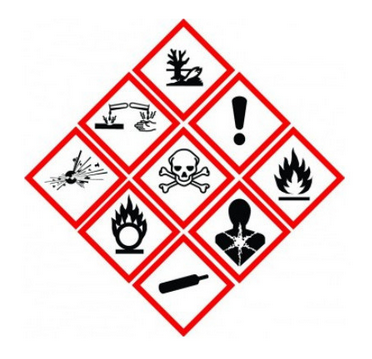Taiwan's Occupational Safety and Health Administration, Ministry of Labor (OSHA) has revised the GHS classification standards CNS 15030 based on the 8th version of GHS, involving 22 documents covering chemical classification and labeling-General Principles. If relevant enterprises have any opinions, they should submit them no later than June 16.

The following are the core contents of the revision:
- A new classification standard has been added, which is CNS 15030-29 desensitized explosives. Desensitized explosives were first included in UN GHS Version 6, and were retained in subsequent versions. In the draft for public comment on CNS 15030-29, desensitized explosives are defined as explosives that are phlegmatized to suppress their explosive properties in such a manner that they do not mass explode and do not burn too rapidly, and therefore may be exempted from explosives with hazard classification of solid or liquid explosive substances or mixtures. Desensitized explosives are divided into four categories based on the corrected burning rate. Clarify the label information of "desensitized explosive", and provide different signal words according to the classification information, and give the corresponding hazard statement and prevention instructions. The logic for determining "desensitized explosives" is provided in the annex.
- The category assignment for flammable gases in CNS 15030-2 has been revised. The original Category 1 was split into Category 1A and 1B, with flammable gases and chemically unstable gases classified under Category 1A.
- The name of CNS 15030-3 was revised from aerosol to aerosol and chemicals under pressure, and the definition of chemicals under pressure was introduced, which is defined as: liquids or solids (e.g., pastes or powders), pressurized with a gas at a pressure of 200 kPa (gauge) or more at 20℃ in pressure receptacles other than aerosol dispensers and which are not classified as gases under pressure. Chemicals under pressure typically contain 50% or more by mass of liquids or solids whereas mixtures containing more than 50% gases are typically considered as gases under pressure. In addition, three subcategory tables for aerosols, three subcategory symbols, signal words, and hazard statements, and the decision logic for chemicals under pressure is provided in the appendix.
- The definition of acute toxicity in CNS 15030-17 was revised, with the exposure time being changed from 24 hours or 4 hours of inhalation exposure to a single exposure or short-term exposure. The exposure routes of dusts and mists were introduced, along with the Mass Median Aerodynamic Diameter (MMAD).
- The definitions of skin corrosion/irritation in CNS 15030-18 were revised by using a tiered approach for classification. Human and animal data, in vitro/ex vitro text data, read-across, QSAR, etc.,can be used and different weights are assigned to each. The in vitro test methods OECD 430, 431, 435, and 439 were introduced to classify chemicals for skin corrosion/irritation.
- The definition of serious eye damage/eye irritation in CNS 15030-19 was revised, and in vitro test methods OECD 437, 438, and 460 were introduced to classify chemicals for serious eye damage/eye irritation.
Other related standards have also been revised in part, but overall, it will not have a significant impact on the classification and labeling for enterprises. Companies with export-related businesses should carefully read the official GHS standard revision opinion. The amendment is expected to pass with a high probability. At that time, companies need to revise their SDS and labels in a timely manner, and make adjustments based on the new standard, time, etc.
If you need any assistance or have any questions, please get in touch with us via service@cirs-group.com.
Further Information

